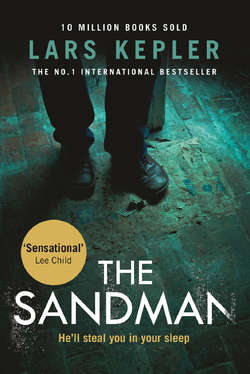Читать книгу The Sandman - Ларс Кеплер - Страница 30
24
ОглавлениеJoona locked the door very carefully when he got home at half past four that morning. His heart thudding with trepidation, he moved Lumi’s warm, sweaty body closer to the middle of the bed before putting his arm round both her and Summa. He realised he wasn’t going to be able to sleep, but just needed to lie down with his family.
He was back in Lill-Jan’s Forest by seven o’clock. The area had been cordoned off and was under guard, but the snow around the grave was already so churned up by the police, dogs and paramedics that there was no point trying to find any tracks of a potential accomplice.
Before ten o’clock a police dog unit had identified a location close to the Uggleviken reservoir, just two hundred metres from the woman’s grave. A team of forensics experts and crime-scene analysts was called in, and a couple of hours later the remains of a middle-aged man and a boy of about fifteen had been exhumed. They were both squashed into a blue plastic barrel, and forensic examination indicated that they’d been buried almost four years before. They hadn’t survived many hours in the barrel even though there was a tube supplying them with air.
Jurek Walter was registered as living on Björnövägen, part of a large housing estate built in the early 1970s, in the Hovsjö district of Södertälje. It was the only address in his name. According to the records, he hadn’t lived anywhere else since he arrived in Sweden from Poland in 1994 and was granted a work permit.
He had taken a job as a mechanic for a small company, Menge’s Engineering Workshop, where he repaired train gearboxes and renovated diesel engines.
All the evidence suggested that he lived a lonely, peaceful life.
Joona and Samuel and the two forensics officers didn’t know what they might find in Jurek Walter’s flat. A torture chamber or trophy cabinet, jars of formaldehyde, freezers containing body parts, shelves bulging with photographic documentation?
The police had cordoned off the immediate vicinity of the block of flats, and the whole of the second floor.
They put on protective clothing, opened the door and started to set out boards to walk on, so that they wouldn’t ruin any evidence.
Jurek Walter lived in a two-room flat measuring thirty-three square metres.
There was a pile of junk mail below the letterbox. The hall was completely empty. There were no shoes or clothes in the wardrobe beside the front door.
They moved further in.
Joona was prepared for someone to be hiding inside, but everything was perfectly still, as if time had abandoned the place.
The blinds were drawn. The flat smelled of sunshine and dust.
There was no furniture in the kitchen. The fridge was open and switched off. There was nothing to suggest it had ever been used. The hotplates on the cooker had rusted slightly. Inside the oven the operating instructions were still taped to the side. The only food they found in the cupboards was two tins of sliced pineapple.
In the bedroom was a narrow bed with no bedclothes, and inside the wardrobe one clean shirt hung from a metal hanger.
That was all.
Joona tried to work out what the empty flat signified. It was obvious that Jurek Walter didn’t live there.
Perhaps he only used it as a postal address.
There was nothing in the flat to lead them anywhere else. The only fingerprints belonged to Jurek himself.
He had no criminal record, had never been suspected of any crime, he wasn’t on any registers held by social services. Jurek Walter had no private insurance, had never taken out a loan, his tax was deducted directly from his wages, and he had never claimed any tax credits.
There were so many different registers. More than three hundred of them, all covered by the Personal Records Act. Jurek Walter was only listed in the ones that no citizen could avoid.
Otherwise he was invisible.
He had never been off sick, had never sought help from a doctor or dentist.
He wasn’t in the firearms register, the vehicle register, there were no school records, no registered political or religious affiliations.
It was as if he had lived his life with the express intention of being as invisible as possible.
There was nothing that could lead them any further.
The few people he had been in contact with at his workplace knew nothing about him. They could only report that he never said much, but he was a very good mechanic.
When the National Criminal Investigation Department received a response from the Policja, their Polish counterparts, it turned out that Jurek Walter had been dead for many years. Because this Jurek Walter had been found murdered in a public toilet at the central station, Kraków Główny, they were able to supply both photographs and fingerprints.
Neither pictures nor prints matched the Swedish serial killer.
Presumably he had stolen the identity of the real Jurek Walter.
The man they had captured in Lill-Jan’s Forest was looking more and more like a frightening enigma.
They went on combing the forest for another three months, but after the man and boy in the barrel no more of Jurek Walter’s victims had been found.
Not until Mikael Kohler-Frost turned up, walking across a bridge, heading for Stockholm.
